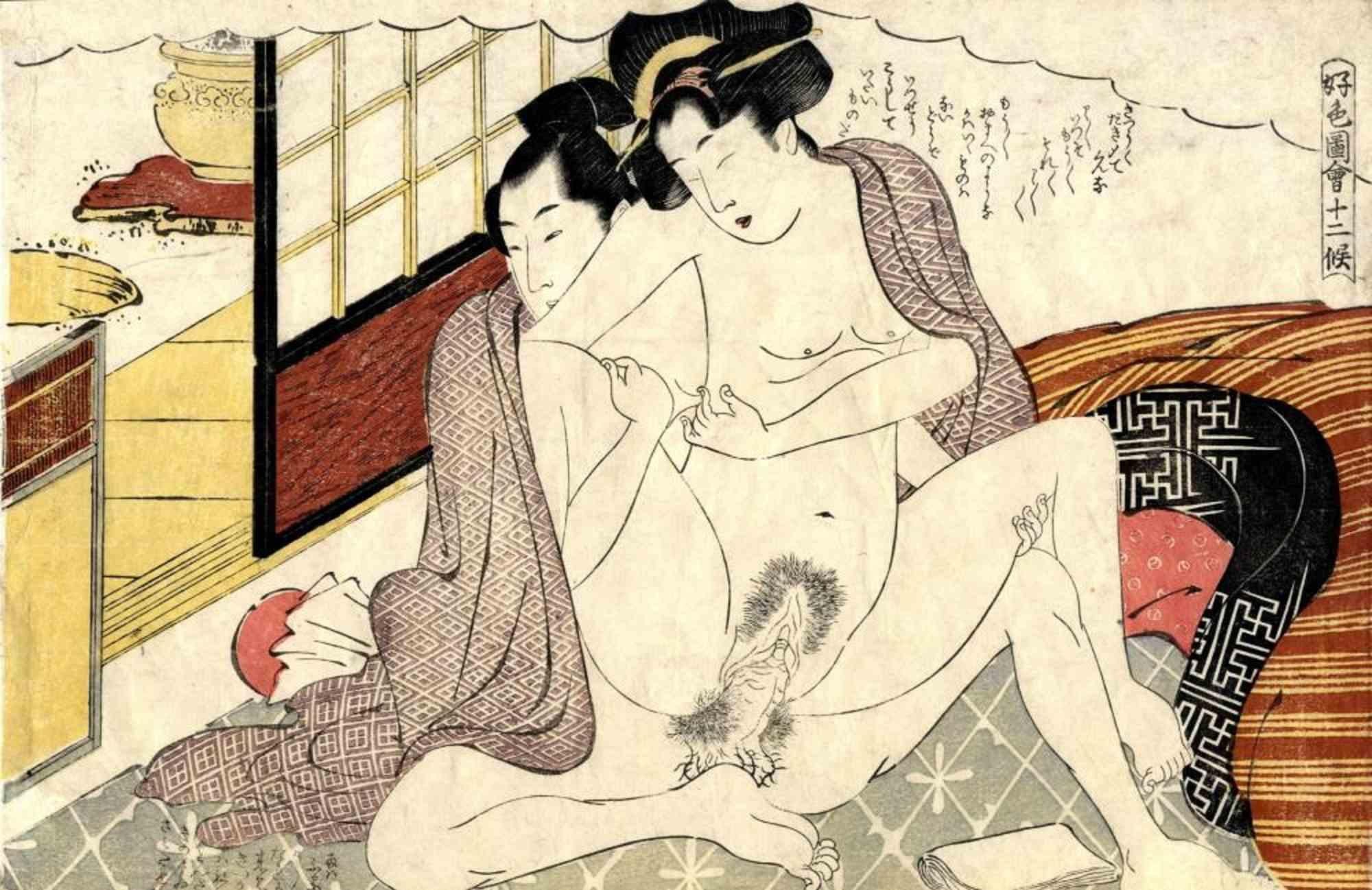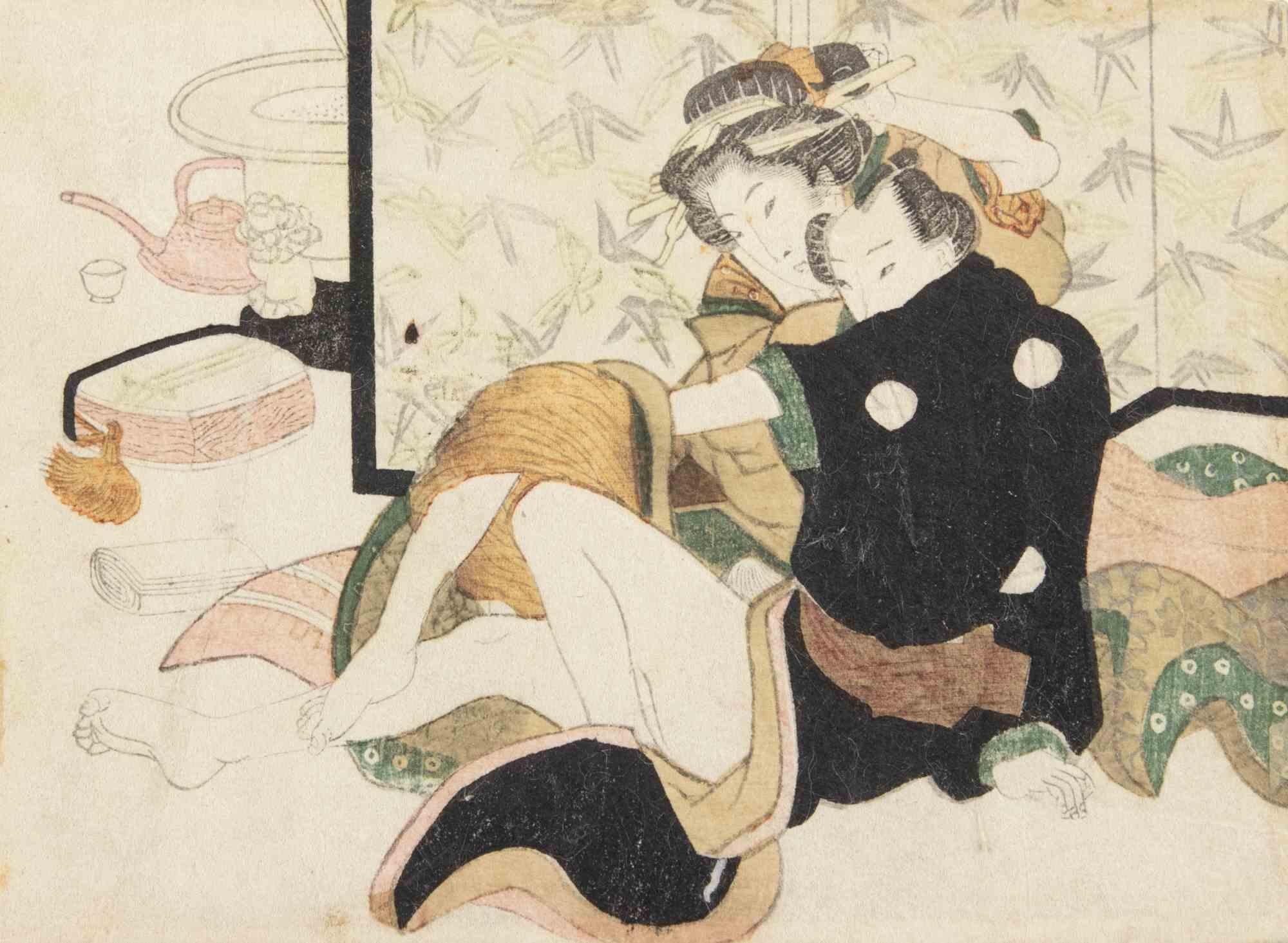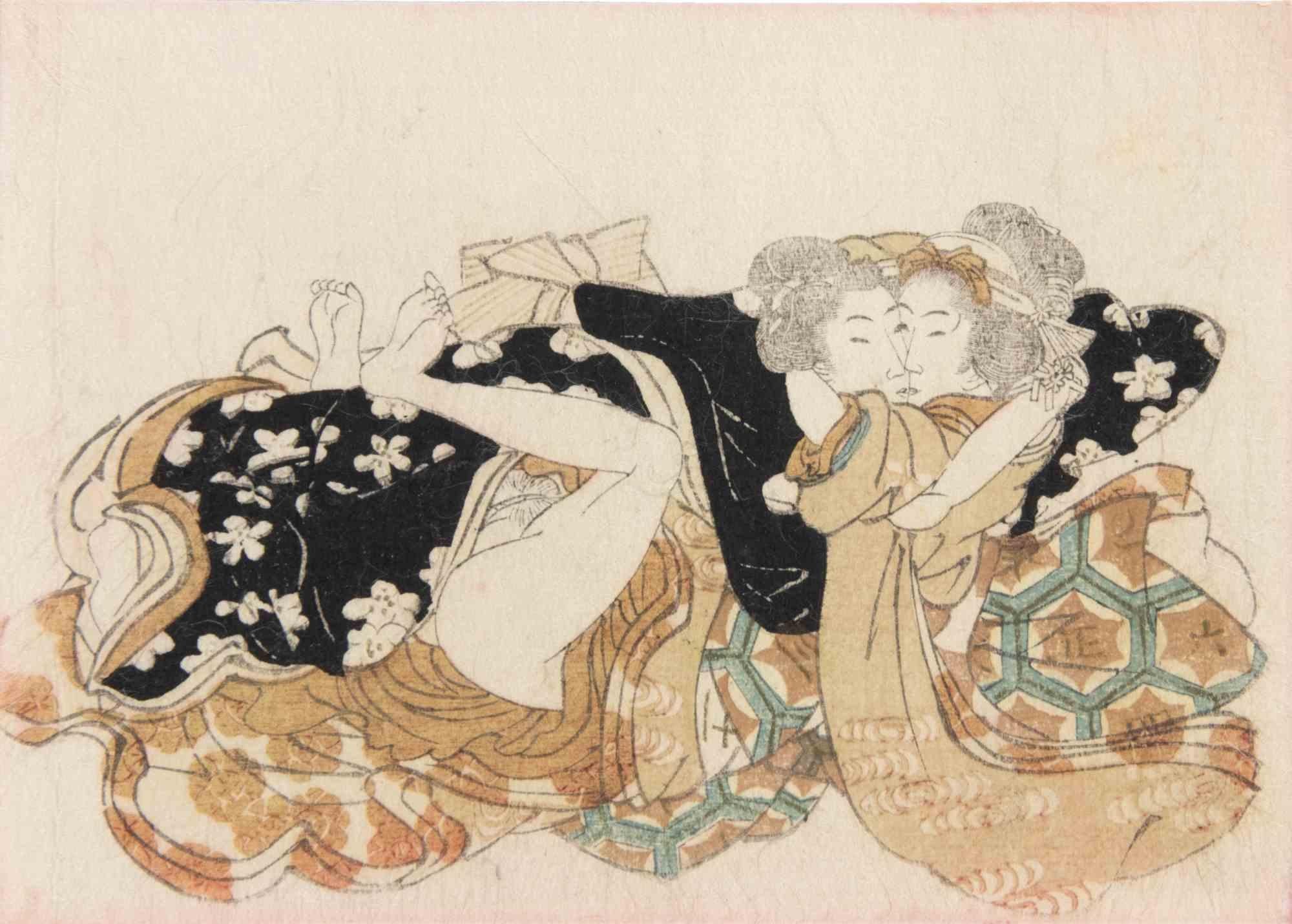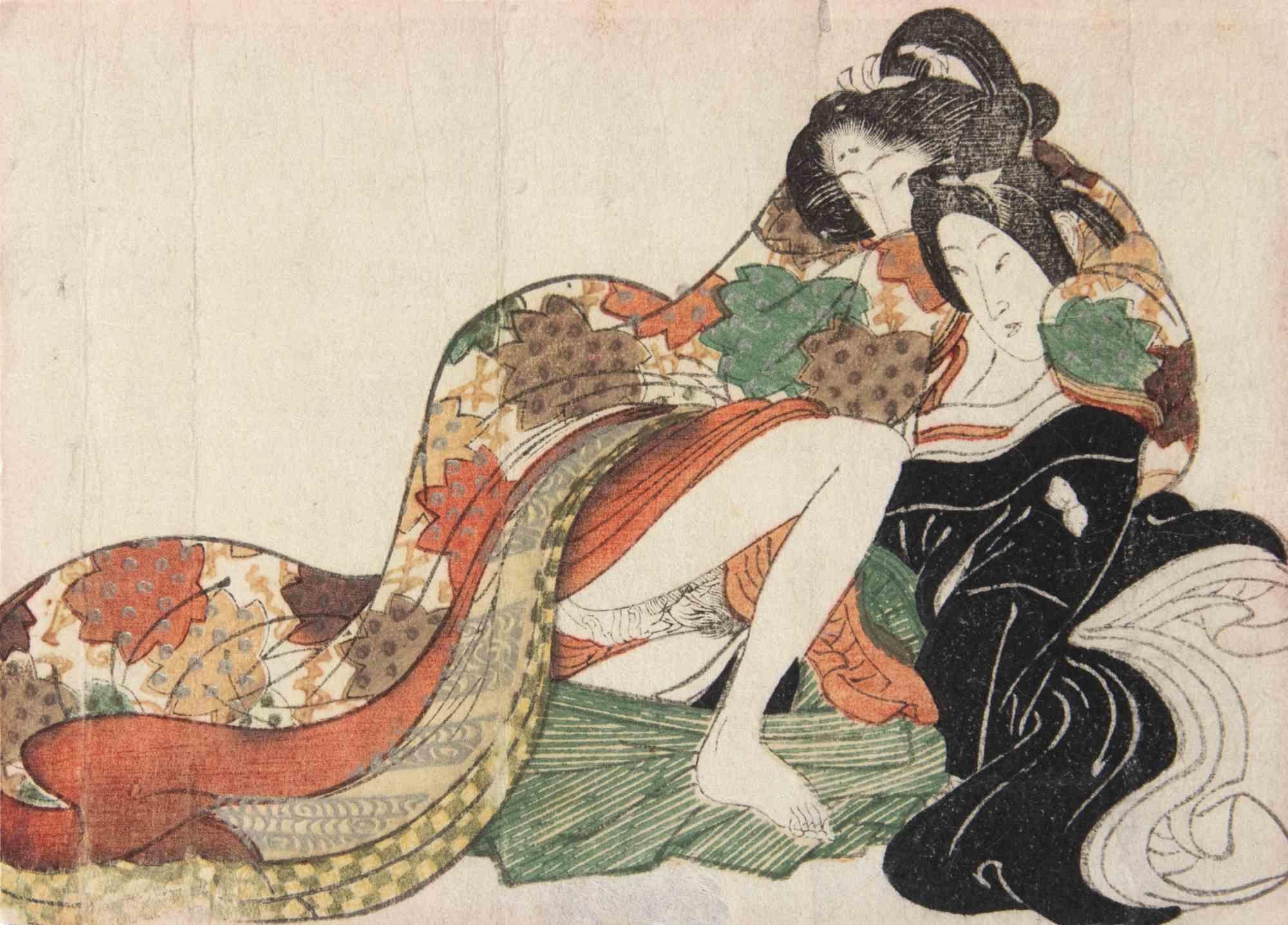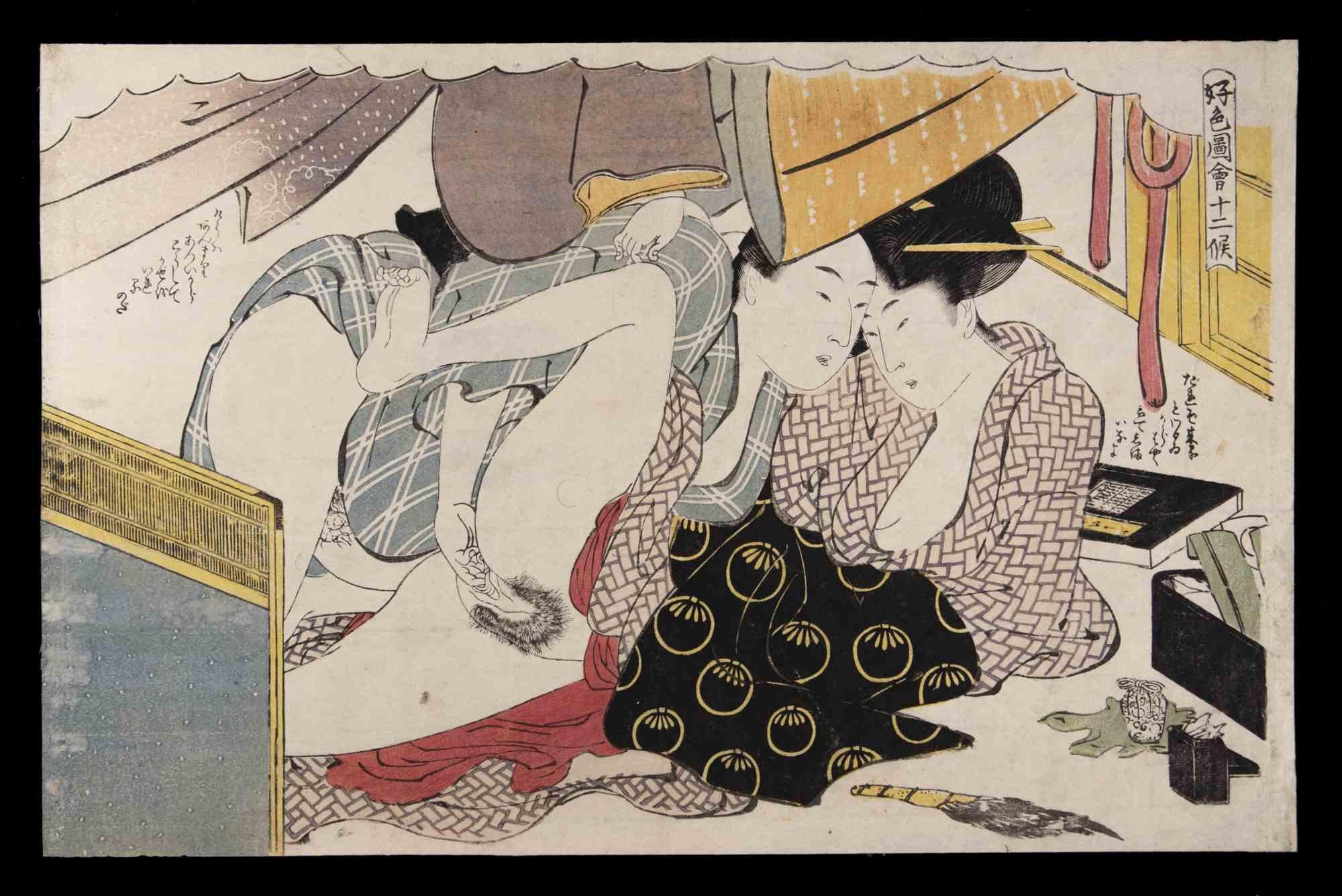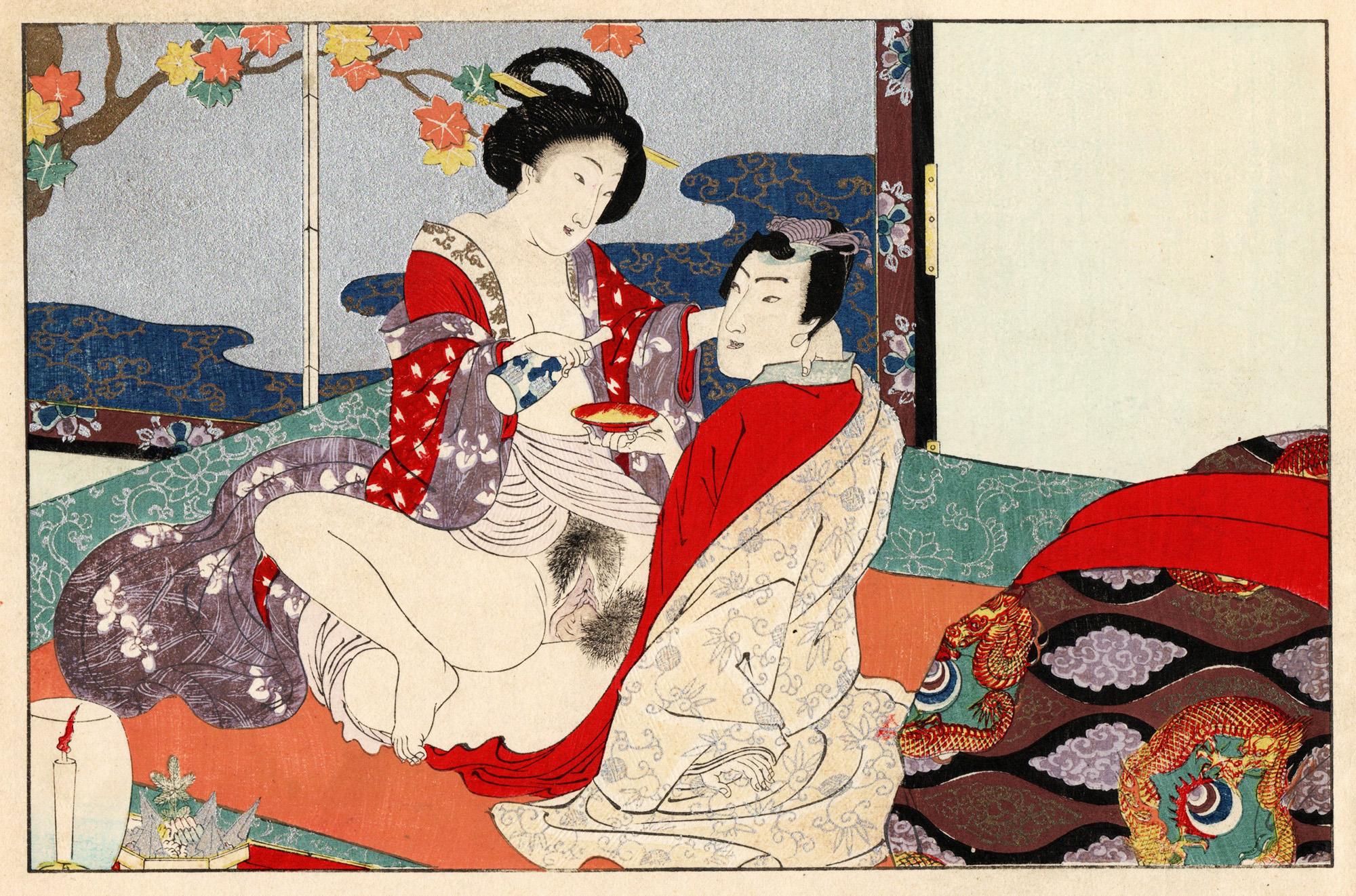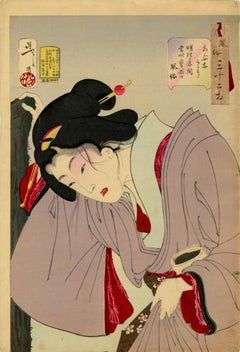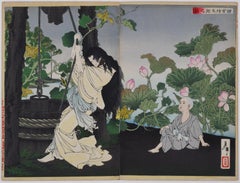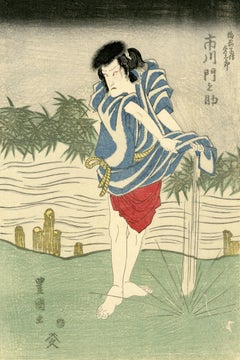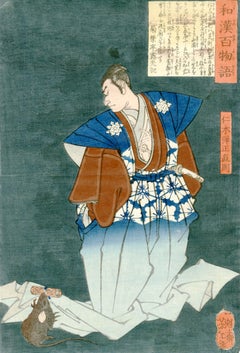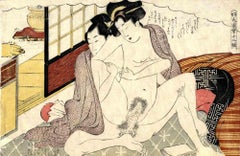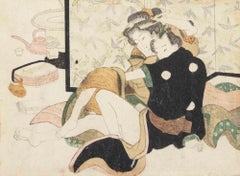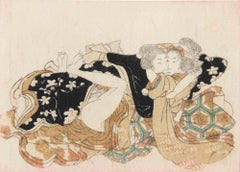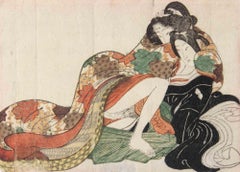Items Similar to Shunga: Twelve Signs of the Zodiac - Goat
Want more images or videos?
Request additional images or videos from the seller
1 of 5
Isoda KoryusaiShunga: Twelve Signs of the Zodiac - Goat1770's
1770's
$900
£696.11
€792.48
CA$1,292.25
A$1,411.83
CHF 739.94
MX$16,857.68
NOK 9,364.06
SEK 8,731.79
DKK 5,918.59
About the Item
Shunga: Twelve Signs of the Zodiac - Goat
Color woodcut with gauffrage (embossing)
Unsigned (as usual)
Format: Shikishiban
Publisher: Privately produced
Unusually well preserved with the fugitive blue still intact
Image size: 5-1/8 x 5-3/4"
Sheet size: 5 3/8 x 6 1/4"
From Wikipedia, the free encyclopedia
In this Japanese name, the surname is Isoda.
Isoda Koryūsai (礒田 湖龍斎, 1735–1790) was a Japanese ukiyo-e print designer and painter active from 1769 to 1790.
Life and career
Koryūsai was born in 1735 and worked as a samurai in the service of the Tsuchiya clan. He became a masterless rōnin after the death of the head of the clan and moved to Edo (modern Tokyo) where he settled near Ryōgoku Bridge in the Yagenbori area. He became a print designer there under the art name Haruhiro in 1769, at first making samurai-themed designs. The ukiyo-e print master Harunobu died in 1770, and about that time Koryūsai began making prints in a similar style of life in the pleasure districts.
Koryūsai was a prolific designer of individual prints and print series,[1] most of which appeared between 1769 and 1881.
In 1782, Koryūsai applied for and received the Buddhist honour hokkyō ("Bridge of the Law") from the imperial court and thereafter used the title as part of his signature. His output slowed from this time, though he continued to design prints until his death in 1790.
Works
Koryūsai created a total of 2,500 known designs, or an average of four a week. According to art historian Allen Hockley, "Koryūsai may ... have been the most productive artist of the eighteenth century".
The series Models for Fashion: New Designs as Fresh Young Leaves (Hinagata wakana no hatsumoyō, 1776–1781) ran for 140 prints, the longest known ukiyo-e print series of beauties. He designed at least 350 hashira-e pillar prints, numerous kachō-e bird-and-flower prints, a great number of shunga erotic prints, and others. Ninety of his nikuhitsu-ga paintings are known, making him one of the most productive painters of the period.
Legacy
Despite Koryūsai's productivity and popularity—both in his time and amongst later collectors—his work has attracted little scholarship. The first ukiyo-e histories written in the West in the 19th century elevated certain artists as exemplars; Koryūsai's work came to be seen as too indebted to Harunobu, who died in 1770, and inferior to that of Kiyonaga, whose peak period came in the 1880s. An example is Woldemar von Seidlitz's Geschichte des japanischen Farbenholzschnittes ("History of Japanese colour prints", 1897), the most popular of the early ukiyo-e histories, which paints Koryūsai as a successor to Harunobu and a rival of Kiyonaga in the 1770s who slipped into mediocrity and imitation of his rival by the end of the decade.[5] Interest lay mainly in the details of Koryūsai's life—a samurai who received court honours was unusual in the proletarian world of ukiyo-e. In 2021, contemporary woodblock printmaker David Bull created a series of 12 prints depicting nature scenes adapted from Koryūsai's designs.
His work is held in the permanent collections of several museums worldwide, including the British Museum, the Museum of Fine Arts, Boston, the Carnegie Museum of Art, the Princeton University Art Museum, the Minneapolis Institute of Art, the University of Michigan Museum of Art, the Hermitage Museum, the Suntory Museum of Art, the Israel Museum, the Krannert Art Museum, the Los Angeles County Museum of Art, the Philadelphia Museum of Art,] the Honolulu Museum of Art, the Museum of New Zealand, the Brooklyn Museum,] the Ashmolean Museum, the Fine Arts Museum of San Francisco, the Freer Gallery of Art,] the Indianapolis Museum of Art, the Chazen Museum of Art, the Portland Art Museum, and the Kimbell Art Museum.
- Creator:Isoda Koryusai (1735 - 1790)
- Creation Year:1770's
- Dimensions:Height: 5.13 in (13.04 cm)Width: 5.75 in (14.61 cm)
- Medium:
- Period:1770-1779
- Condition:
- Gallery Location:Fairlawn, OH
- Reference Number:Seller: UK16211stDibs: LU14015733892
About the Seller
5.0
Recognized Seller
These prestigious sellers are industry leaders and represent the highest echelon for item quality and design.
Gold Seller
Premium sellers maintaining a 4.3+ rating and 24-hour response times
Established in 1978
1stDibs seller since 2013
827 sales on 1stDibs
Typical response time: <1 hour
Associations
International Fine Print Dealers Association
- ShippingRetrieving quote...Shipping from: Akron, OH
- Return Policy
More From This Seller
View AllDangerous: The Appearance of a Contemporary Geisha of the Meiji Era
By Taiso Yoshitoshi
Located in Fairlawn, OH
Dangerous: The Appearance of a Contemporary Geisha of the Meiji Era
Color woodcut, 1888
Plate 28 from the series "Thirty-two Aspects of Customs and Manners" (Fuzoku Sanjuniso)
Format...
Category
1880s Figurative Prints
Materials
Woodcut
The Story of Tamiya Bataro
By Taiso Yoshitoshi
Located in Fairlawn, OH
The Story of Tamiya Bataro
Color woodcut diptych, March 22, 1886
Signed and sealed by the artist (see photo) Yoshitoshi signature, Taiso seal
Series: New selection of eastern brocad...
Category
1880s Figurative Prints
Materials
Woodcut
Inari Kozo Tasaburo- Kabuki
By Utagawa Toyokuni
Located in Fairlawn, OH
Inari Kozo Tasaburo- Kabuki
Color woodcut, c. 1820
Signed: ‘Toyokuni’
Publisher: ‘Yamamoto Heikichi’
Censor: Hama and Magome
Very good impression and color
Sheet/Image size: 15 1/2 x...
Category
1820s Other Art Style Figurative Prints
Materials
Woodcut
Nikki Danjo (Naonon)
By Taiso Yoshitoshi
Located in Fairlawn, OH
"One of the main characters of the kabuki play Meiboku Sendai hagi (The Disputed Succession)"
Signed: Ikkaisai Yoshitoshi ga (in gourd shaped cartouche)
Format: oban
Publisher: Da...
Category
1860s Figurative Prints
Materials
Woodcut
Kataoka Nizayemon(?)
By Utagawa Kunisada (Toyokuni III)
Located in Fairlawn, OH
Exceptional, brilliant impression and colors from the extremely rare 1st edition
Kataoka Nizayemon(?)
Color woodcut, 1860
From the series: "Contemporary Brocade Mirror Portraits"
Pub...
Category
1860s Portrait Prints
Materials
Woodcut
Arashi Rikan II in an Osaka Kabuki Scene
Located in Fairlawn, OH
Arashi Rikan II in an Osaka Kabuki Scene
Color woodcut, c. 1827
Signed middle left (see photo)
Titled upper left (see photo)
Format: oban
Publisher: Honsei
The actor, in character, d...
Category
1820s Other Art Style Figurative Prints
Materials
Woodcut
You May Also Like
Shunga - Woodcut by Katsukawa Schuncho - Mid-18th Century
By Katsukawa Shunshō
Located in Roma, IT
Shunga is an original modern artwork realized by Katsukawa Schuncho (1726 – 1793) in the half of the 18th Century.
Oban yokoe.
Erotic scene from the series "Koshuko zue juni ko" (Erotic pictures...
Category
1750s Modern Figurative Prints
Materials
Paper, Woodcut
Shunga - Woodcut attr. Keisai Eisen - Mid-19th Century
By Keisai Eisen
Located in Roma, IT
Woodcut shunga print attributed to Keisai Eisen and realized in the early 19th century.
Good condition except for some signs of time.
Category
Mid-19th Century Modern Figurative Prints
Materials
Woodcut
Shunga - Woodcut attr. Keisai Eisen - Mid-19th Century
By Keisai Eisen
Located in Roma, IT
Woodcut shunga print attributed to Keisai Eisen and realized in the early 19th century.
Good condition except for some signs of time.
Category
Mid-19th Century Modern Figurative Prints
Materials
Woodcut
Shunga - Woodcut attr. Keisai Eisen - Mid-19th Century
By Keisai Eisen
Located in Roma, IT
Woodcut shunga print attributed to Keisai Eisen and realized in the early 19th century.
Good condition except for some signs of time.
Category
Mid-19th Century Modern Figurative Prints
Materials
Woodcut
Shunga - Woodcut by Katsukawa Schuncho - Mid-18th Century
By Katsukawa Shunshō
Located in Roma, IT
Shunga is an original modern artwork realized by Katsukawa Schuncho (1726 – 1793) in the half of the 18th Century.
Erotic scene from the series "Koshuko zue juni ko".
A courtesan with a customer under a kimono stand...
Category
Mid-18th Century Modern Portrait Prints
Materials
Paper, Woodcut
Seishi Ai-oi Genji – Set of 12 Shunga works together w/astrological commentary
By Utagawa Kunisada (Toyokuni III)
Located in Middletown, NY
Set of 12 woodblock prints in colors on handmade, laid mulberry paper, 6 3/4 x 10 1/4 inches (170 x 258 mm), printed in Ka-ei 4 (1851). Each print with minor handling wear, otherwise in excellent condition with bright and fresh color, and with details printed in silver ink. The images themselves contain several illusive characters indicating the publisher which are obfuscated by figures, as intended. Presented loose, as issued. A fine set.
The astrological commentary print has a large and meandering blind stamp with a bird and palm frond motif. This print lists various phrases concerning the Twelve Zodiac Animals as historically counted in Japan, and appears to include erotic commentary on the traits of people born under each of the twelve signs.
These Shunga images were issued in books that paralleled (in an erotic fashion...
Category
Mid-19th Century Edo Nude Prints
Materials
Ink, Handmade Paper, Woodcut
More Ways To Browse
Antique Goat
Lucky Strike Vintage Poster
Marc Albert
Marc Chagall Eiffel Tower
Marc Chagall Levi
Marc Chagall Numbered Print
Marc Chagall Romeo Juliet Poster
Marc Ferrero
Marilyn Avedon
Marilyn Crying Diamond
Marina Abramovic Poster
Martin Lewis On Sale
Marvel Stan Lee Comics
Maurice Evans
Maurice Utrillo Original
Millais Art Prints
Milton Green
Mucha Flowers
